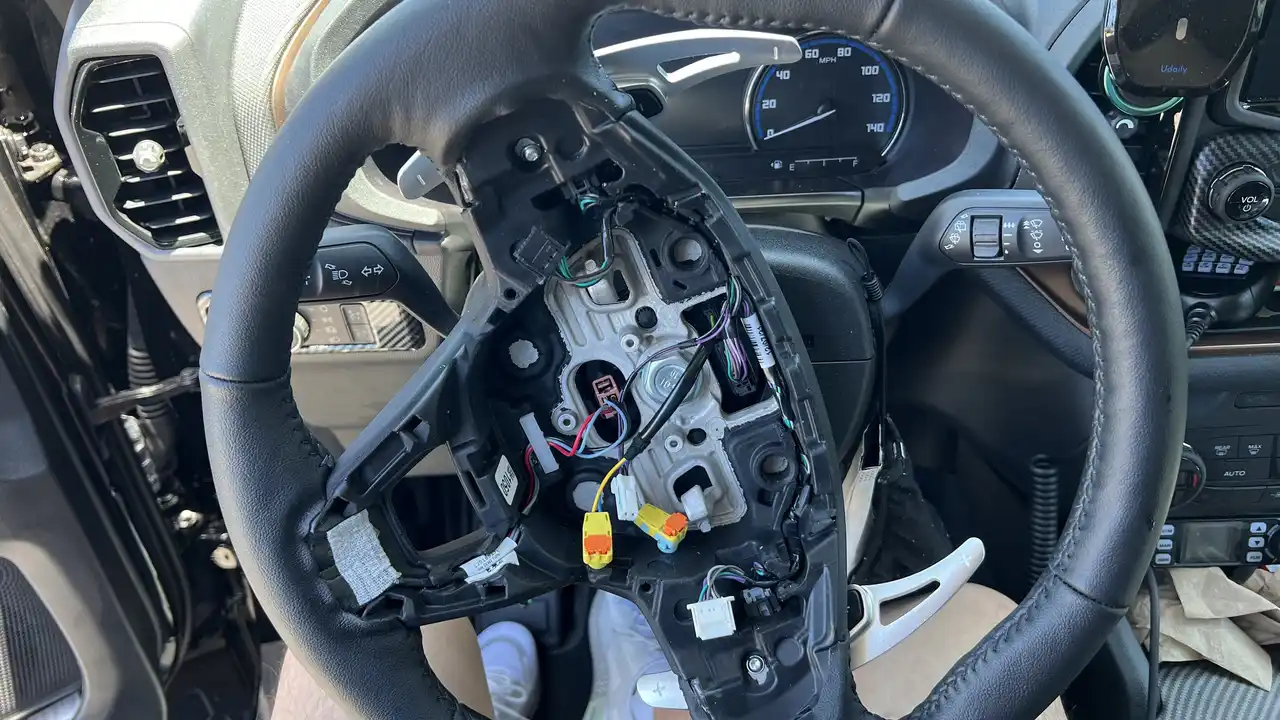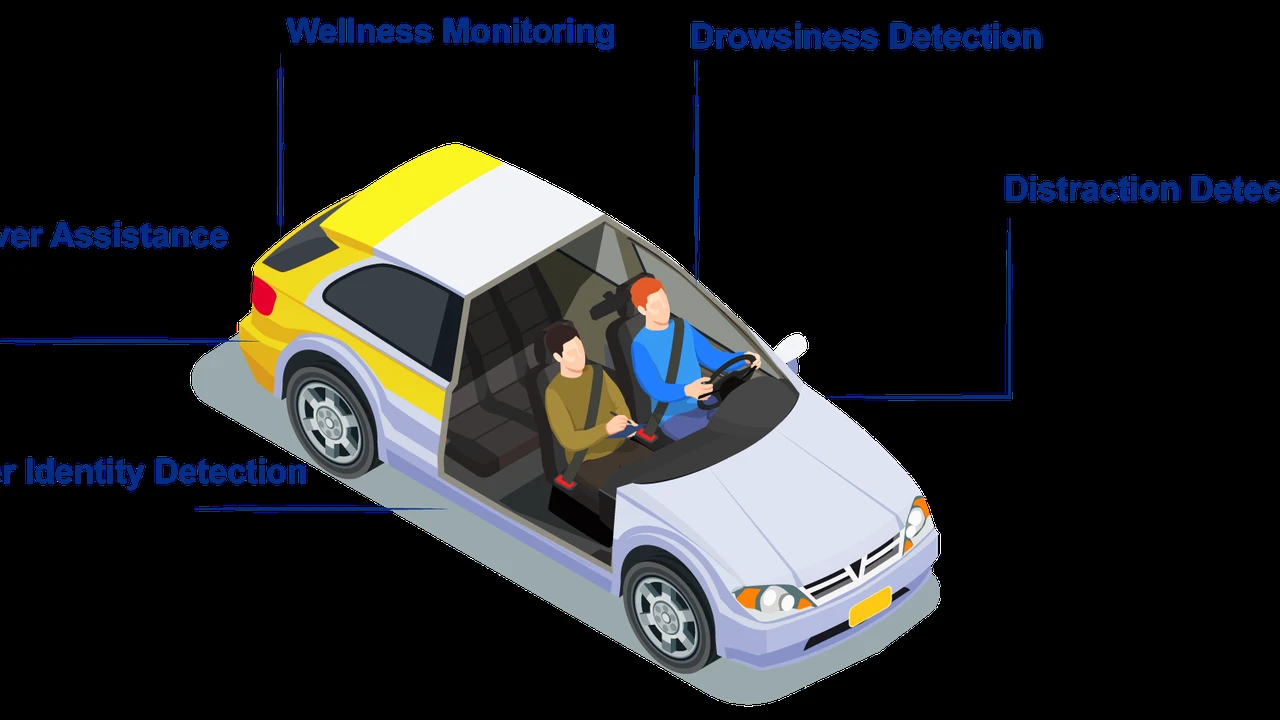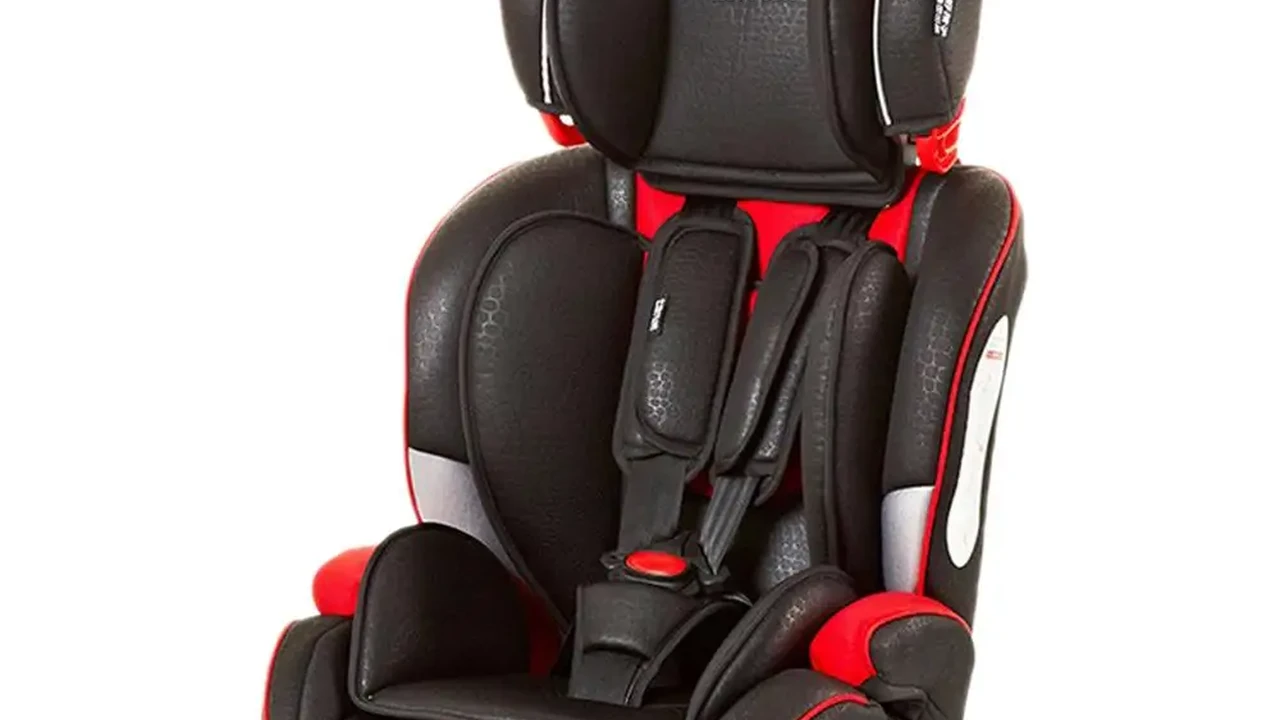Adaptive Cruise Control: A Comprehensive Safety Review
Sample meta description.

Understanding Adaptive Cruise Control Technology and its Safety Benefits
So, you're curious about Adaptive Cruise Control (ACC)? Good! It's a seriously cool piece of tech that's making our roads a whole lot safer. Think of it as cruise control, but with brains. Instead of just maintaining a set speed, ACC uses sensors (usually radar or lidar) to detect the speed and distance of the vehicle in front of you. If they slow down, you slow down. If they speed up, you speed up (within your set speed limit, of course!). No more constant fiddling with the cruise control button when traffic gets a little congested.
The main benefit, obviously, is safety. It reduces the risk of rear-end collisions, especially in stop-and-go traffic. It also reduces driver fatigue, especially on long drives. Let's be honest, constantly monitoring your speed and the distance to the car ahead can be tiring. ACC takes some of that burden off your shoulders, allowing you to focus more on the overall driving environment.
How ACC Works Radar Lidar and Sensor Technology Explained
Let's dive into the nitty-gritty of how ACC actually works. The core of the system is its sensor. Radar is probably the most common type. It emits radio waves that bounce off objects, allowing the system to calculate the distance and speed of the vehicle ahead. Lidar, on the other hand, uses laser light to do the same thing. Lidar tends to be more precise than radar, especially in adverse weather conditions, but it can also be more expensive.
Once the sensor collects the data, it's fed into a computer that controls the vehicle's throttle and brakes. The computer constantly adjusts the speed to maintain a safe following distance. You can usually set the following distance to your preference – further back for more conservative driving, or closer for a more aggressive style (although, we always recommend erring on the side of caution!).
Exploring Different Types of ACC Systems and their Features
Not all ACC systems are created equal. Some are simpler, only capable of maintaining a set speed and following distance. Others are more advanced, offering features like:
- Stop-and-Go ACC: This is a lifesaver in heavy traffic. It can bring the car to a complete stop and then automatically resume driving when the car in front starts moving.
- Curve Speed Adaptation: Some systems can even adjust the speed based on the curvature of the road, preventing you from taking a turn too fast.
- Predictive ACC: These systems use GPS data and map information to anticipate changes in traffic flow and adjust the speed accordingly.
Top ACC Products on the Market A Detailed Comparison
Okay, let's talk specific products. Here are a few ACC systems that are getting a lot of buzz:
- Tesla Autopilot: Tesla's Autopilot is one of the most advanced ACC systems on the market. It combines ACC with lane keeping assist and automatic lane changing. The "Navigate on Autopilot" feature can even steer the car through highway interchanges. Use Case: Perfect for long highway drives and navigating complex traffic situations. Comparison: More features than most other systems, but also more expensive and can sometimes be overly aggressive. Price: Included in the price of Tesla vehicles, but "Full Self-Driving Capability" requires an additional purchase (around $12,000).
- Honda Sensing: Honda Sensing is a suite of safety features that includes ACC, lane keeping assist, and collision mitigation braking. It's a more affordable option than Tesla Autopilot, but still offers a good level of functionality. Use Case: Great for everyday driving and commuting. Comparison: More user-friendly than Tesla Autopilot, but not as advanced. Price: Standard on many Honda models.
- Subaru EyeSight: Subaru EyeSight uses two cameras mounted near the rearview mirror to monitor the road ahead. It offers ACC, lane keeping assist, and pre-collision braking. Use Case: Excellent for driving in challenging weather conditions, thanks to its robust camera system. Comparison: Very reliable and accurate, but can be limited in low-light conditions. Price: Standard on many Subaru models.
- Mercedes-Benz Distronic Plus: Mercedes-Benz Distronic Plus is a sophisticated ACC system that uses radar and cameras to maintain a safe following distance. It also includes steering assist and lane keeping assist. Use Case: Ideal for luxury driving and long-distance travel, providing a smooth and comfortable experience. Comparison: Offers a high level of precision and responsiveness, but can be more complex to configure. Price: Available as an option on many Mercedes-Benz models, typically adding several thousand dollars to the vehicle's price.
- BMW Active Driving Assistant: BMW Active Driving Assistant is a comprehensive suite of safety features that includes ACC with Stop & Go, lane departure warning, and pedestrian detection. It provides a balance of performance and safety. Use Case: Suitable for both city and highway driving, offering a dynamic driving experience with added safety. Comparison: Known for its integration with BMW's driving dynamics, but can be more sensitive to road conditions. Price: Often included in optional packages, adding a few thousand dollars to the vehicle's price.
Real World ACC Usage Scenarios and User Experiences
Imagine you're stuck in rush hour traffic. Stop-and-go, stop-and-go. Without ACC, you'd be constantly hitting the gas and brake. With ACC, the car handles it all for you, automatically adjusting the speed to maintain a safe following distance. It's a huge stress reliever!
Or, picture yourself on a long road trip. You set the cruise control, and ACC keeps you a safe distance from the car ahead. You can relax and enjoy the scenery, knowing that the car is helping you stay safe.
Of course, ACC isn't perfect. It can sometimes be fooled by unusual situations, like a car suddenly cutting in front of you. It's important to always pay attention and be ready to take control if necessary. Think of ACC as a helpful assistant, not a replacement for your own driving skills.
Comparing ACC Systems Across Different Car Brands and Models
As you've seen, ACC systems vary greatly between different car brands and models. Some are more advanced, offering a wider range of features and capabilities. Others are more basic, but still provide a significant safety benefit.
When choosing a car with ACC, consider your driving needs and preferences. If you do a lot of highway driving, you'll want a system with stop-and-go functionality and curve speed adaptation. If you primarily drive in the city, a simpler system may be sufficient.
Also, be sure to read reviews and compare different systems before making a decision. Some systems are known for being more reliable and accurate than others. And some are simply easier to use.
The Future of Adaptive Cruise Control and Autonomous Driving
ACC is just one step on the road to autonomous driving. As technology continues to evolve, we can expect to see even more advanced ACC systems that are capable of handling increasingly complex driving situations. Imagine a future where cars can drive themselves from point A to point B, with minimal human intervention. It's not as far off as you might think!
In the meantime, ACC is a valuable tool that can help make our roads safer and more enjoyable. So, if you're in the market for a new car, be sure to consider one with ACC. You might be surprised at how much you like it.
ACC Maintenance Tips and Troubleshooting Common Issues
To ensure your ACC system functions correctly, regular maintenance is essential. Keep the sensors clean and free from obstructions. Dirt, snow, or ice can interfere with the sensor's ability to detect other vehicles. Also, make sure the vehicle's computer system is up-to-date with the latest software updates.
Common issues include the ACC system disengaging unexpectedly or providing inaccurate readings. If you experience these problems, consult your vehicle's owner's manual or take it to a qualified mechanic. Sometimes, a simple reset or recalibration can resolve the issue.
The Cost Benefits of Investing in a Vehicle with ACC
While vehicles equipped with ACC may have a higher initial cost, the long-term benefits can outweigh the expense. Reduced risk of accidents can lead to lower insurance premiums and fewer repair costs. Additionally, the convenience and reduced driver fatigue can improve overall driving satisfaction.
Consider the potential savings in terms of time and stress. ACC can make commuting and long trips more manageable, allowing you to focus on other aspects of your journey. Over time, these benefits can add up, making ACC a worthwhile investment.
:max_bytes(150000):strip_icc()/277019-baked-pork-chops-with-cream-of-mushroom-soup-DDMFS-beauty-4x3-BG-7505-5762b731cf30447d9cbbbbbf387beafa.jpg)






